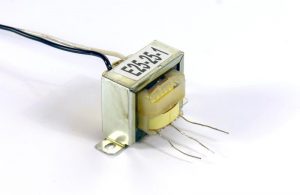In today's fast-paced world, home automation has become increasingly popular, offering convenience, comfort, and energy efficiency. From controlling lights and appliances to managing security systems and entertainment devices, a well-designed home automation system can transform your living space into a smart, interconnected hub. In this article, we will delve into the intricacies of installing a home automation system, providing you with a step-by-step guide and expert tips to ensure a seamless and efficient setup.
- Assessing Your Needs and Goals:
Before diving into the installation process, it is crucial to determine your specific requirements and objectives for a home automation system. Consider the areas of your home that you want to automate, such as lighting, heating, security, entertainment, and energy management. Understanding your needs will help you choose the right components and design a system that caters to your lifestyle. - Researching and Selecting the Right Components:
With a plethora of home automation products available in the market, it is essential to conduct thorough research to identify the most suitable devices for your system. Look for products that are compatible with each other and offer the features you desire. From smart thermostats and lighting controls to security cameras and voice assistants, ensure that the components integrate seamlessly and provide the functionality you need. - Planning the System Layout:
Once you have selected the components, it's time to plan the layout of your home automation system. Consider the placement of devices, wiring requirements, and connectivity options. Create a detailed diagram or blueprint that outlines the placement of control panels, sensors, and other devices. This step is crucial to ensure a smooth installation process and optimal performance of your system. - Preparing the Infrastructure:
Before installing the components, it is essential to prepare the infrastructure of your home. This may involve running cables, installing junction boxes, and ensuring proper electrical connections. It is recommended to consult with a professional electrician to ensure compliance with safety regulations and to handle any complex wiring tasks. - Installing and Configuring the Components:
With the infrastructure in place, it's time to install and configure the various components of your home automation system. Follow the manufacturer's instructions carefully, ensuring that each device is securely mounted and connected. Configure the settings and preferences according to your needs, such as scheduling routines, creating user profiles, and integrating with voice control platforms like Amazon Alexa or Google Assistant. - Testing and Troubleshooting:
After installation, thoroughly test each component of your home automation system to ensure proper functionality. Check if all devices are communicating effectively, and commands are executed as intended. Troubleshoot any issues that arise, such as connectivity problems or compatibility issues. It is advisable to consult the manufacturer's support documentation or seek professional assistance if needed. - Expanding and Upgrading Your System:
Home automation is a dynamic field, with new technologies and devices constantly emerging. As you become familiar with your system, you may want to expand its capabilities or upgrade certain components. Stay informed about the latest advancements and consider future-proofing your system by choosing devices that support future upgrades and integrations.
Conclusion:
Installing a home automation system requires careful planning, research, and attention to detail. By following the steps outlined in this comprehensive guide, you can create a smart home environment that enhances your lifestyle and provides unparalleled convenience. Remember to assess your needs, select the right components, plan the system layout, prepare the infrastructure, install and configure the devices, and thoroughly test the system. With a well-designed and properly installed home automation system, you can enjoy the benefits of a truly smart home.




+ There are no comments
Add yours